September 18, 2016
Martha O'Kennon
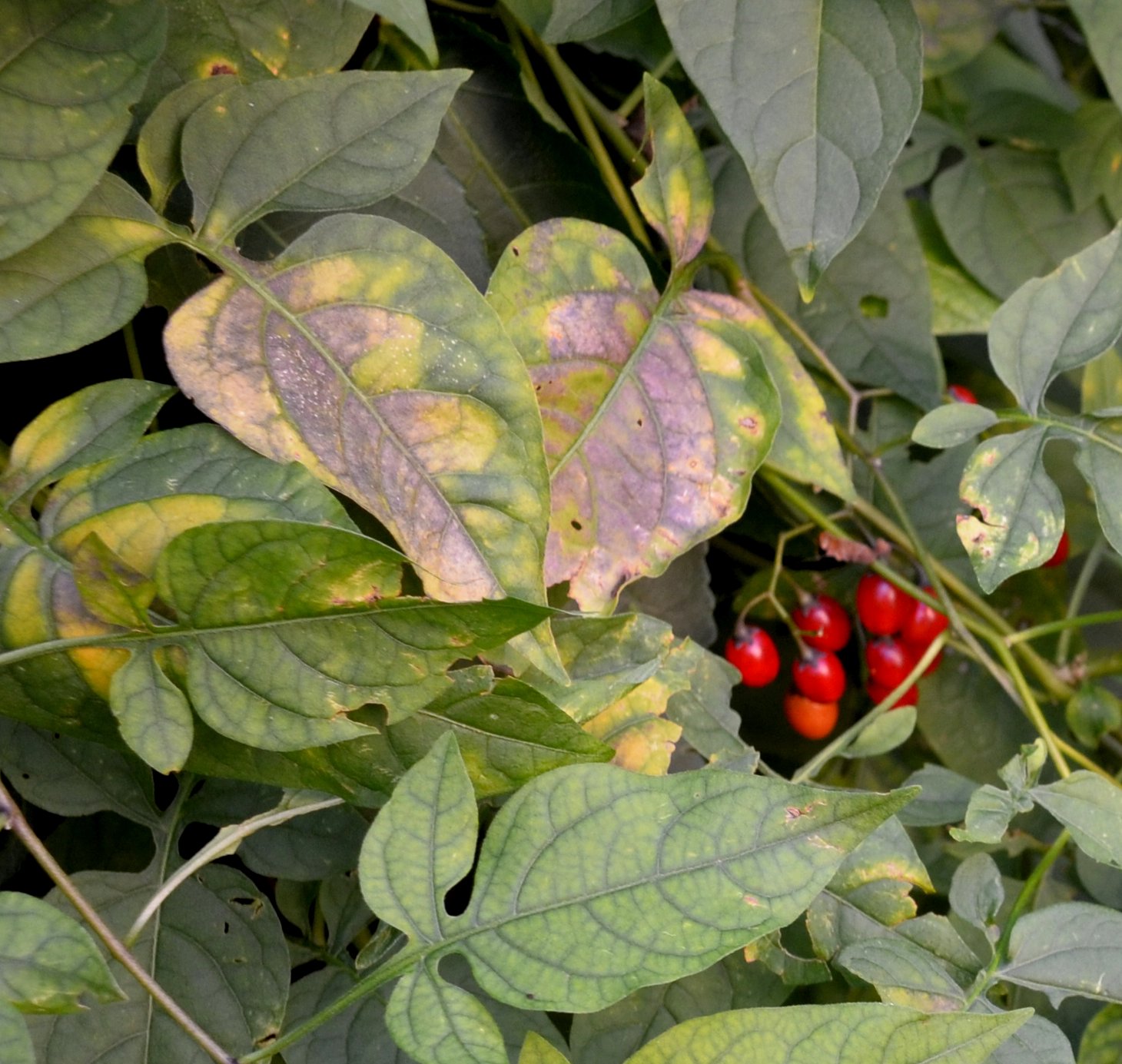
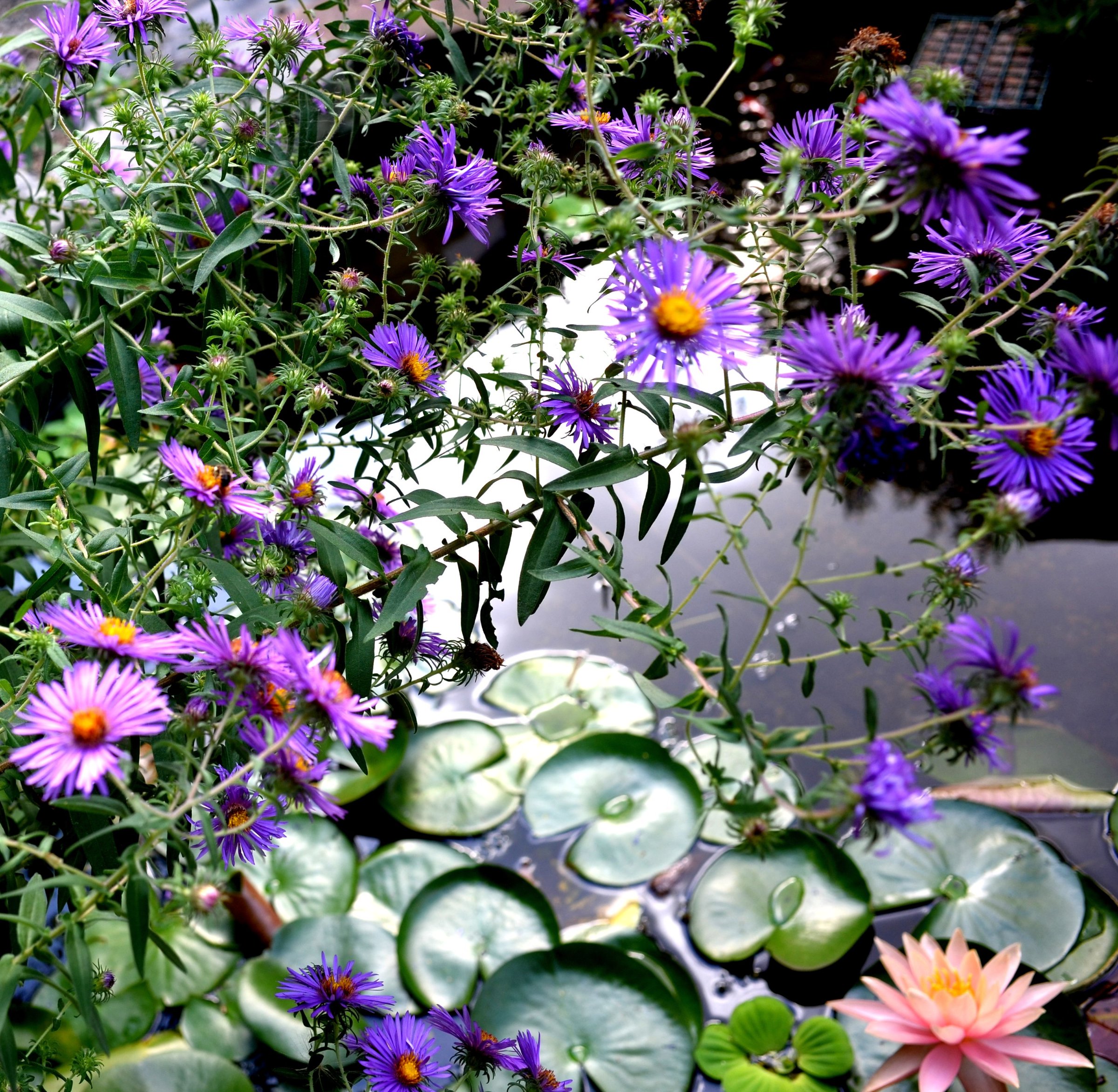

Signs of Autumn - but the AC is still turned on. Actually it comes on less often which is a good sign but middays are still overwarm to my taste and overhumid to everyone's. The purple nightshade is striving to retain its name. The flowers were purple but the berries are bright red. So now to see the leaves with a purple tinge seems to set things right again. The pond is even more lovely with the purple asters all in bloom above it. I've now spotted eight baby fishes, so we must be doing something right. And the autumn fern is beginning to turn.
Remember that there is information in the name of the file for each image. You can see it by mousing over the image - look at the lower left of the screen.
I would try clicking on the image. If the little "+" sign appears, it means you can enlarge again. Whilet is in "+" mode, click on something you want to see more clearly and it will zoom to that section. Then the info is displayed in the address line above. If the image has been cropped
so that clicking on it doesn't result in a larger picture, you can always hit control-plus to increase the size of the image.
This little ant is indeed one of the tiny ones. It was sizing up the aster to see how long it has to wait to get to the flowers. It's very odd - the asters in the back yard are almost peaking (though mostly too inconvenient to get to with the camera, especially all the ones behind the pond), unlike the front and side yard asters, which have only put a dozen or so flowers. The bees are busy these days, like this bumbler sitting on the Japanese Anemone with its back to us, and this little Mason bee on one of the many backyard aster blooms.
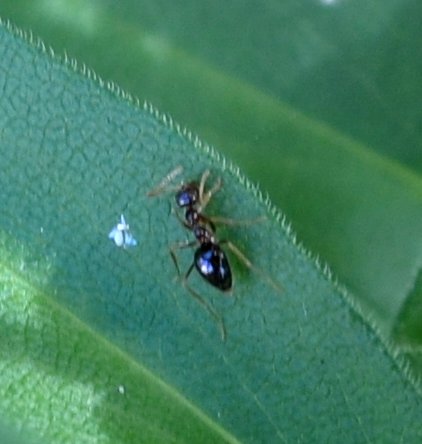
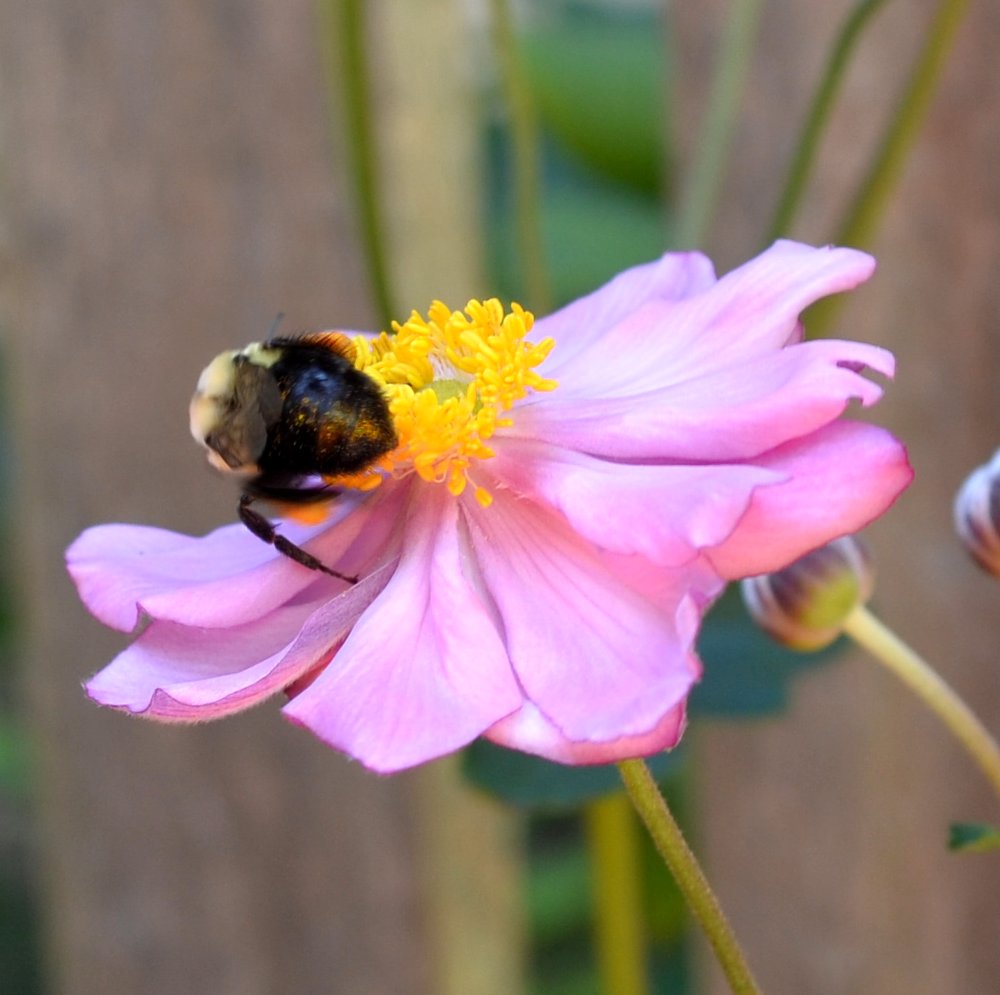
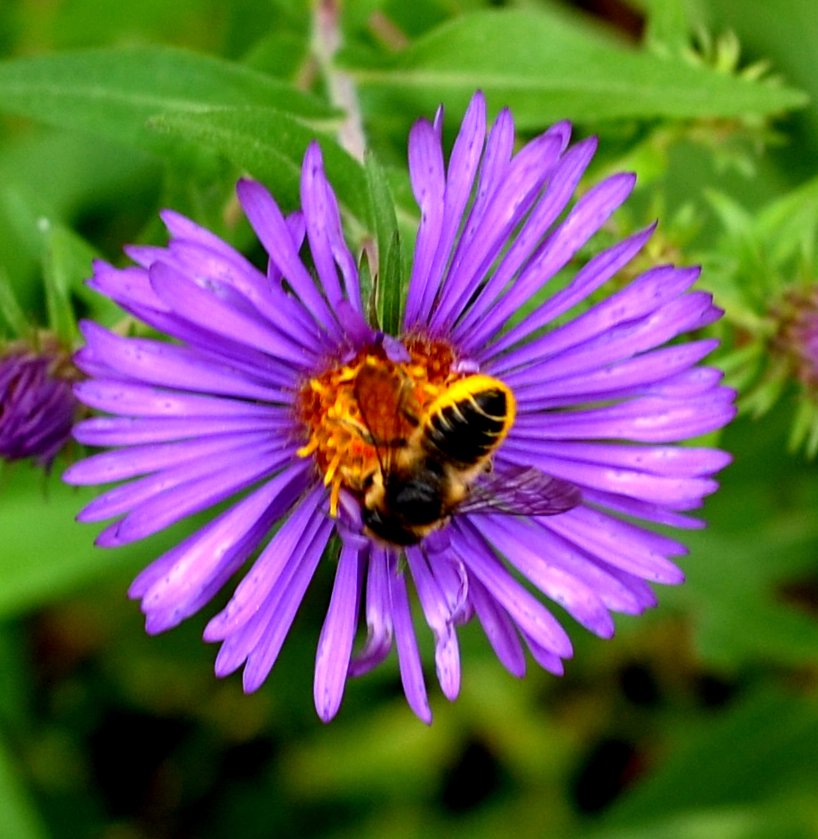
Here is what must be Halictus rubicundus, front and rear views. This is an example of why one view is not enough - would you have matched that stripey abdomen to that brown fluffy face? The little one appears now in droves - and is either in the Halictus or Lasioglossum genus. It is much easier to identify Halictus ligatus when it has pollen in the shape of a triangle on it. It's as if it had a signature pollen collector shape, but nothing like twhen it isn't pollinating.
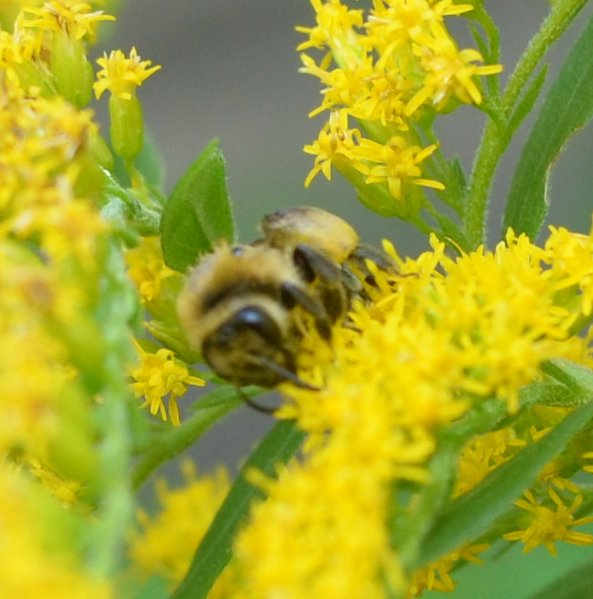
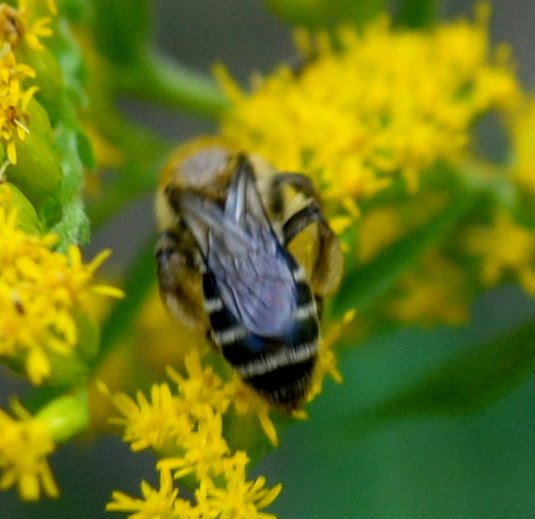
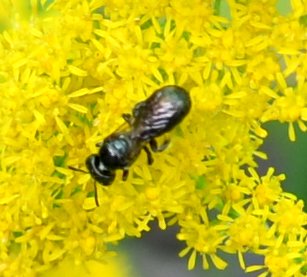
Here are a few friends, the Spotted Cucumber Beetle, the Asian Lady Beetle, the Goldenrod Soldier Beetle, and the redbud Bruchid (who eats the seeds inside the redbud pod).
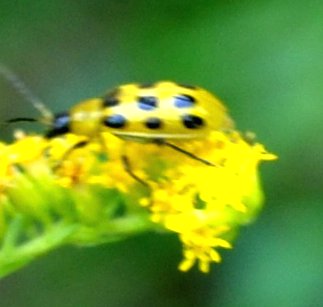



I thought after last week when we saw four ambush beetles on the goldenrod at different places in the yard, that they had peaked and that was that. But guess what? On two successive days I've seen two ambushers, one (first image)in the middle path in the backyard, and one (dead, I think) in the far south of the southeastern back yard. The third was spotted in the middle path Friday looking the wrong way, but I expect that when it turns around, that Lygus in the upper right of the image is going to be in hot water.
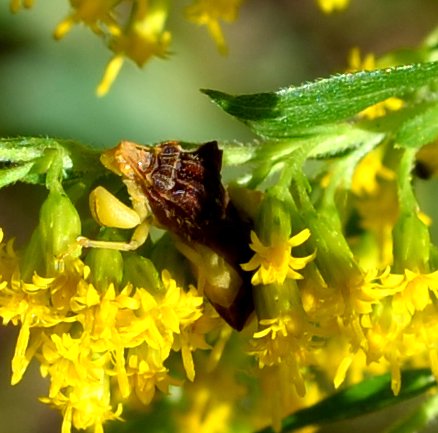

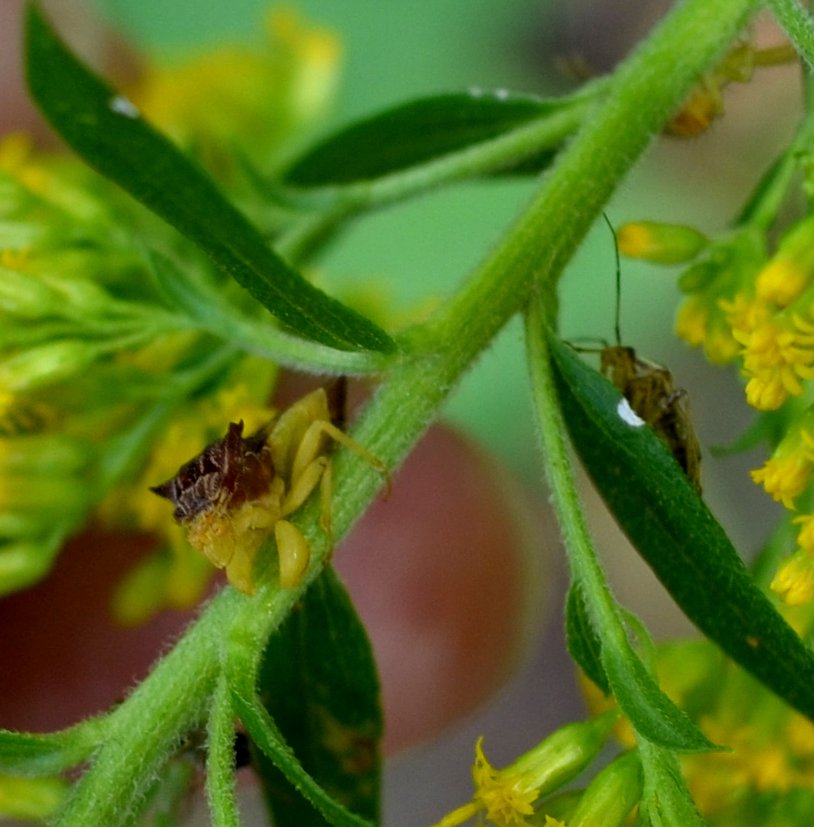
I have to append this. This is the first good shot I got of a Lygus plant bug this season. He's the one in trouble if the ambusher turns around.
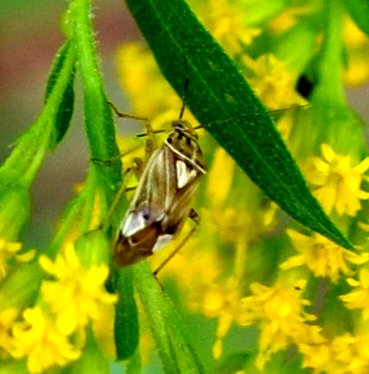
Here's the ambush bug's relative, the assassin bug nymph. This is a surprising shot as usually I can't see how much it needs to shave its legs. The Coelidia Jikradia olitoria leafhopper is always out now, as is the candy stripe leafhopper.
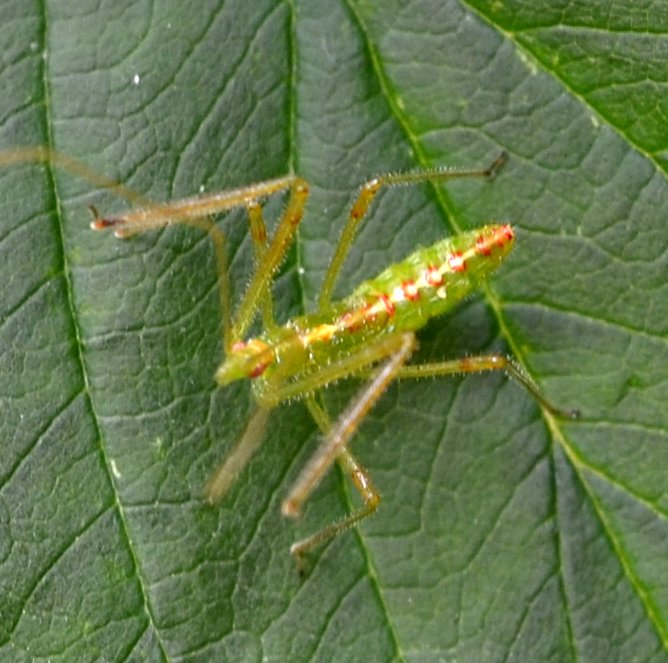
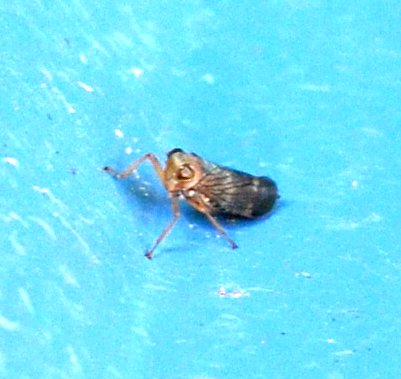
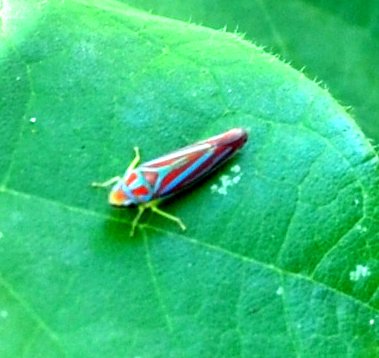
It's been about a month since I've spotted the Japanese Maple Leafhopper. This grey leafhopper was out front on my red door. Next you can see the big chomp the pinkish-grey leafhopper (Jikradia olitoria) took out of the next leaf. It is so pinkish because I was taking its picture in the early morning.

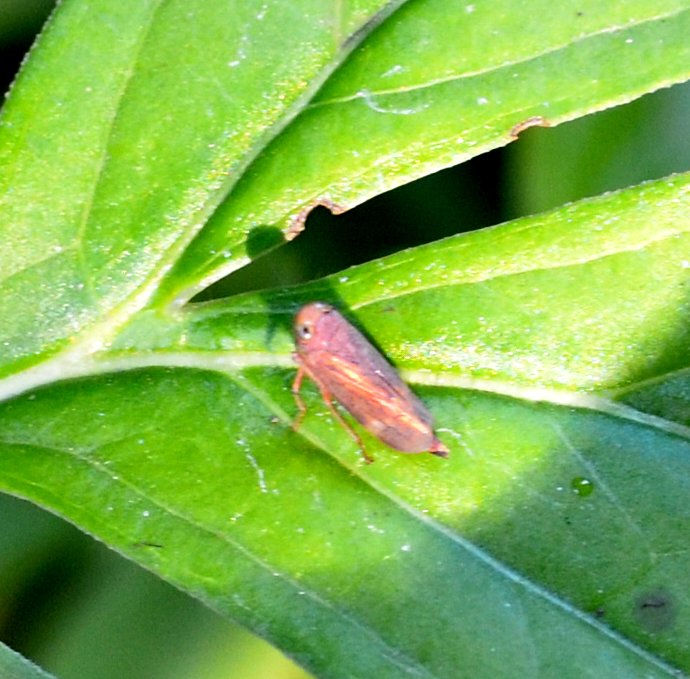

Funny thing. Remember our old friend the spittlebug? And how sometimes it was more black than brown? Well, yesterday I was just coming in from a grueling session taking pictures. (Actually I was very hungry and was really in a hurry to lie back and crop, lighten, and up the contrast? When I got to the fuzzy picture I had thought was some sort of debris, what I saw was a black spittlebug and a brown one mating! That settles that, I think.
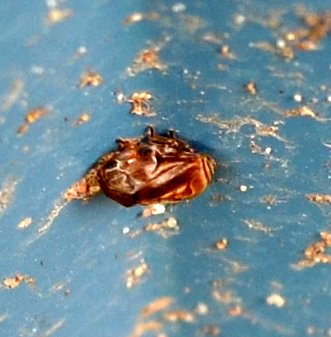
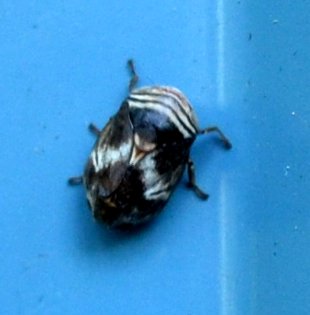
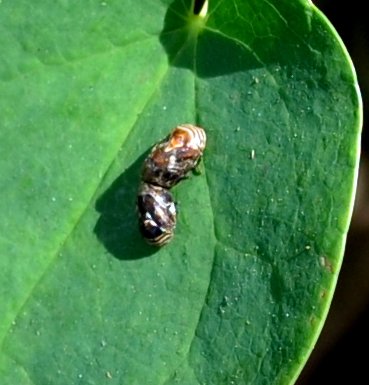
Here are a couple more pics of the cat that thinks my yard is swell.
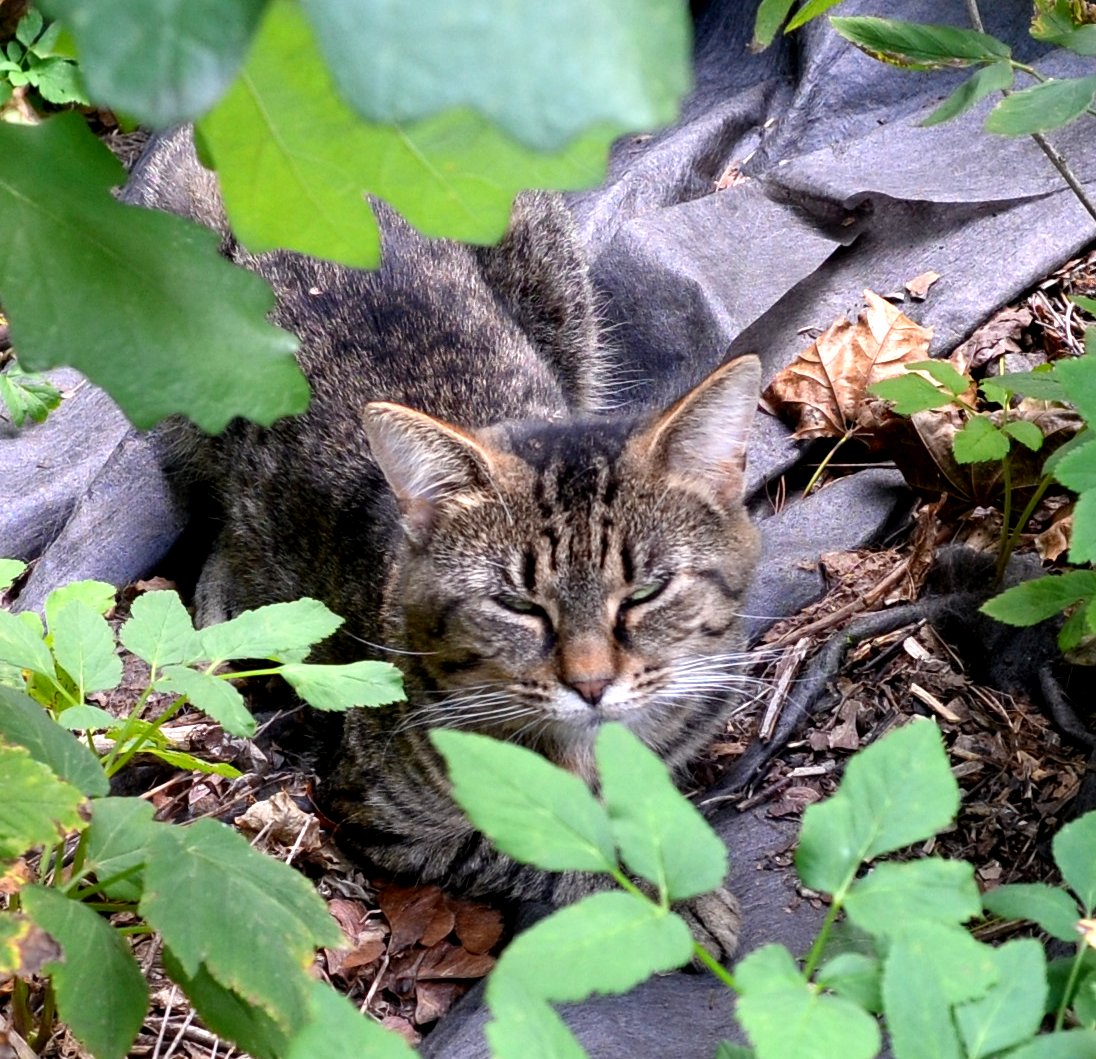

And here we have two darling European earwigs, those champions among mothers.
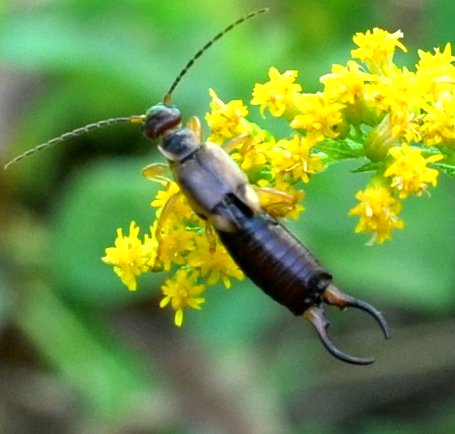
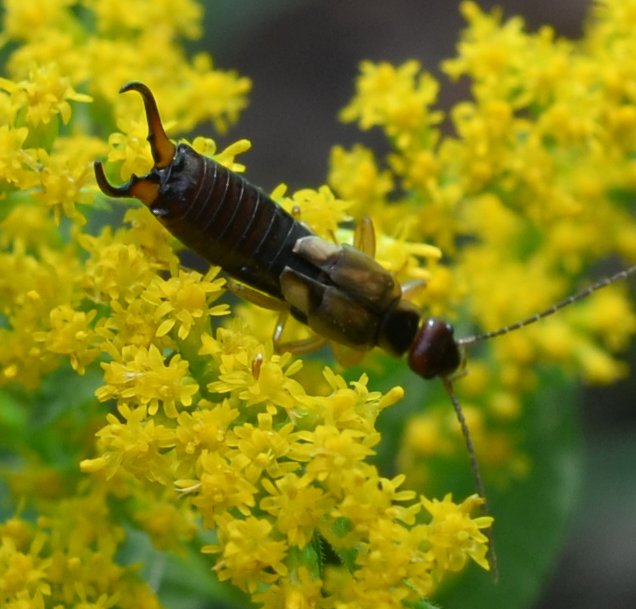
Baby fishes! I had thought I got my submerged and floating water plants in too late for protection of any baby fish from their toxic parents. But every few days now, I will suddenly see a new baby. Here are five of the biggest babies and four full-grown fish. Note that four of the babies are highly colored, each with its own pattern, even the tortoiseshell one. The fifth and largest is still blackish brown, and since this picture, I've counted three tiny brown ones, one of which seems to be developing some colors. In the second image, you see two colored small fishes, one tiny brown one, and one bigger brown one who was probably the first-born.
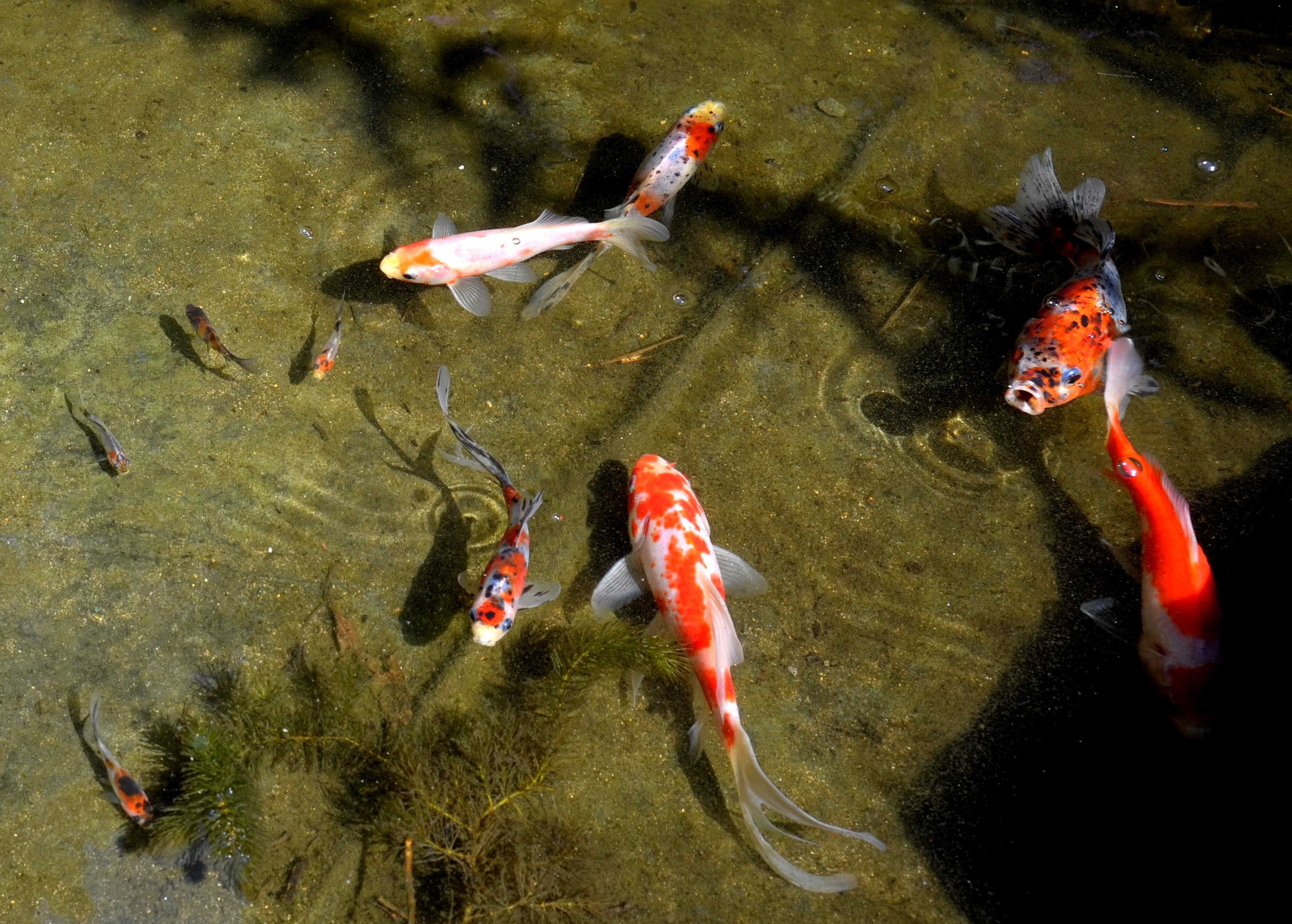
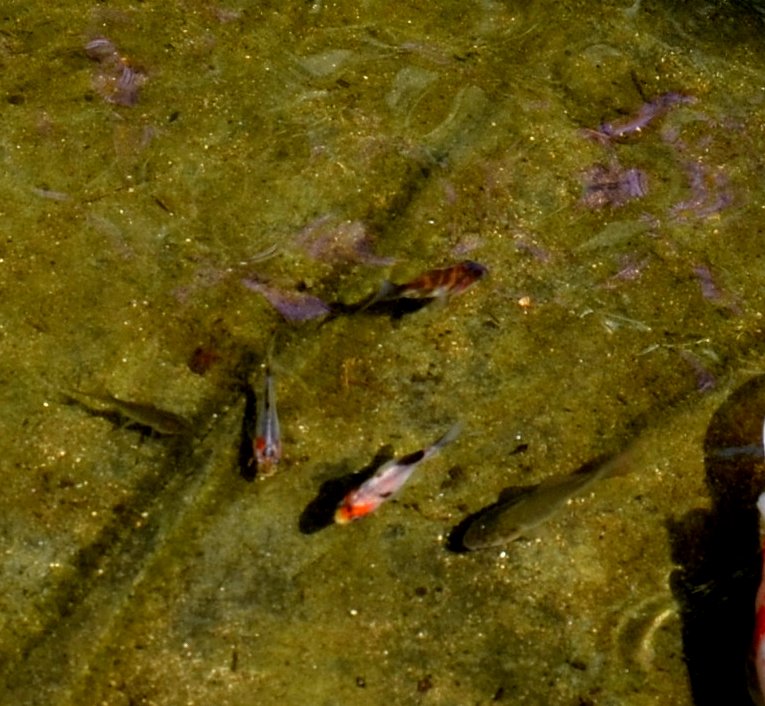
The flies are still figuring to inherit the earth. This first one looks a bit like a wood gnat, and so does the second. I do so like the patteren in the wings of the first one. And the colors of the little Minettia lupulina "fruit" fly. This one really looks like a mosquito, but too big to be one of the ones that drive me crazy.
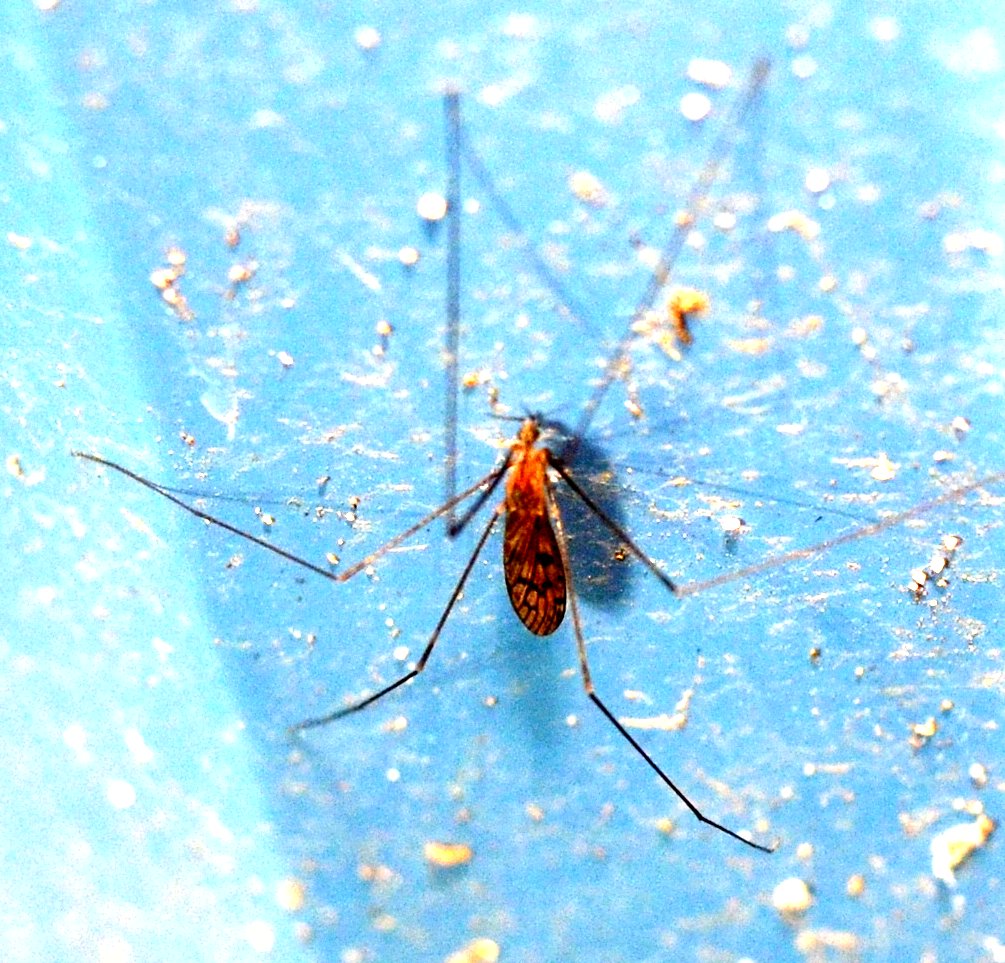
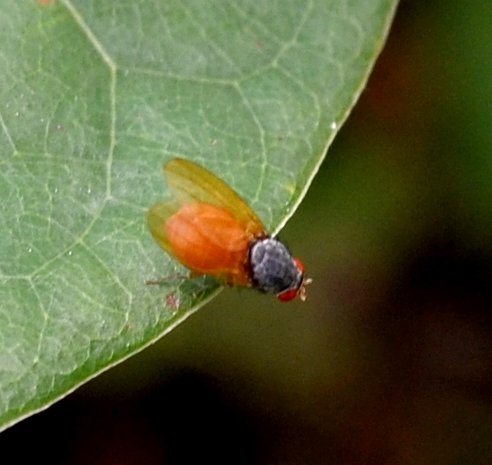

No idea who this first one is! The second one fooled me at first into thinking it was a fly, but now I think it's either a Braconid or an Ichneumon wasp! But the third seems to be a real fly, perhaps one of the Sarcophages (flesh-eaters). And the fourth looks like some kind of Tachinid.
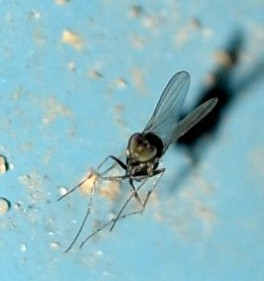
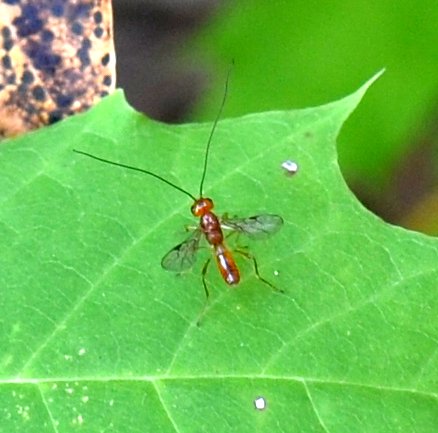
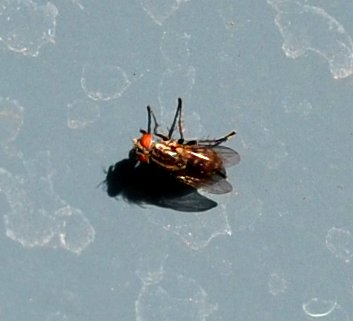
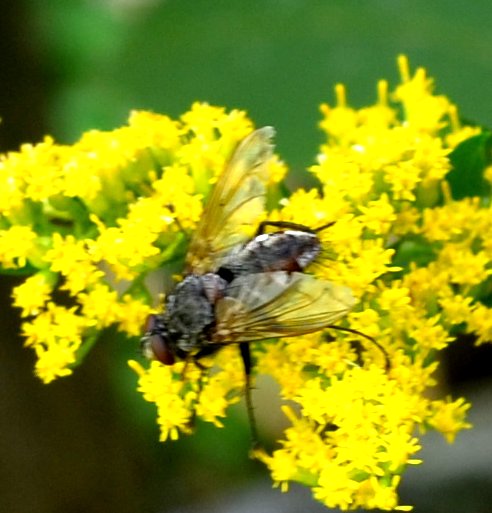
By the way, yesterday while I was sitting by the pond marvelling at the new baby fishes, a yellow and black wasp came and flew around me and actually landed on my arm for a moment. Good thing my "cool" reaction went into effect long enough for me to see fly eyes and a pattern I actually recognized. It was one of the Syrphid (hover) flies, of the genus Sphaerophoria. Here is one of the flies in that Genus.
Just one harvestman, but at least one kind of ichneumon. They were too wiggly without making the shutter faster. The first one was "regular", the second with flash (comes with fastest shutter speed). Can you tell the sex?
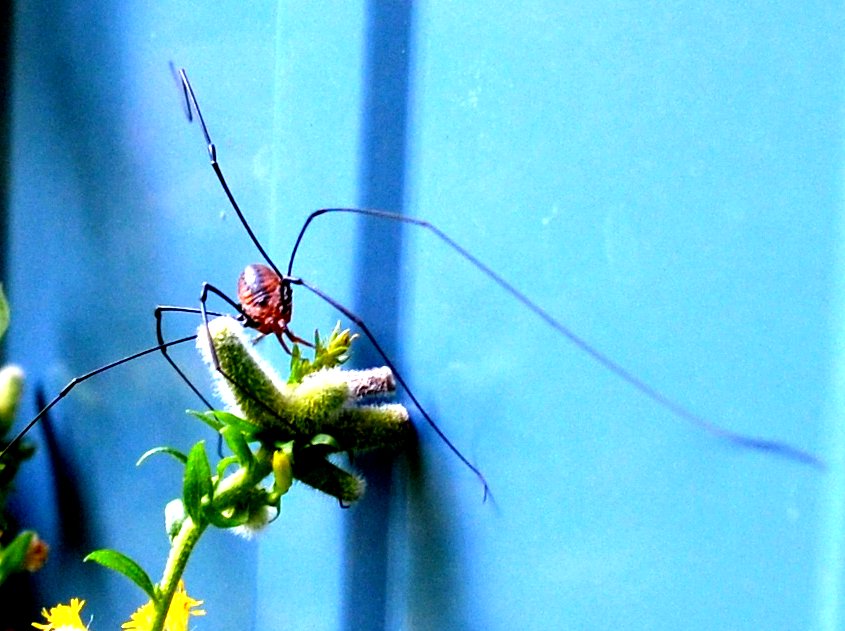
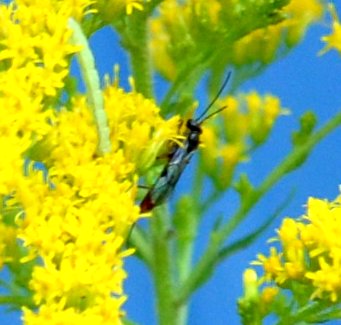

We did have some moths.....Both of these first two are unknown to me. As to the third, back last year when my neighbor Jim sent me a picture of something so new and lovely I couldn't believe it hadn't been created as a work of art by one of those people who make fantasy objects. So a couple of days when one of them was on my goldenrod and remained in the same spot all day (I guess it took off at night...) I couldn't get it into my head that it was real and in OUR neighborhood! It's called the Ailanthus Webworm Moth.
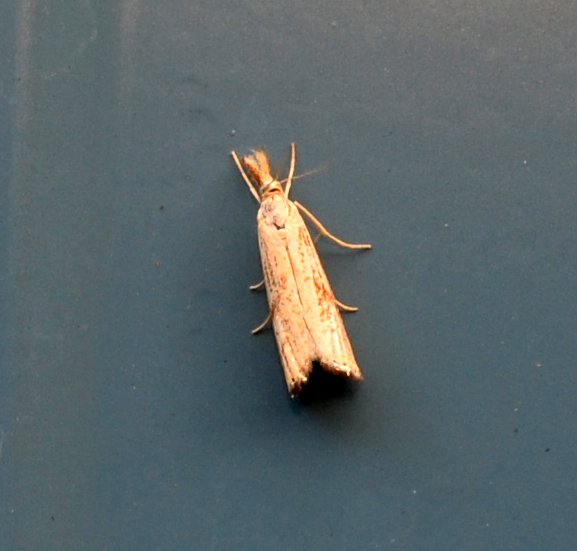
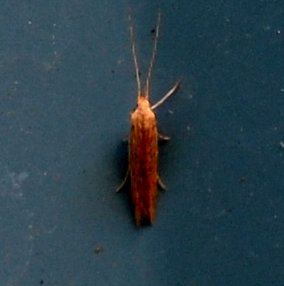
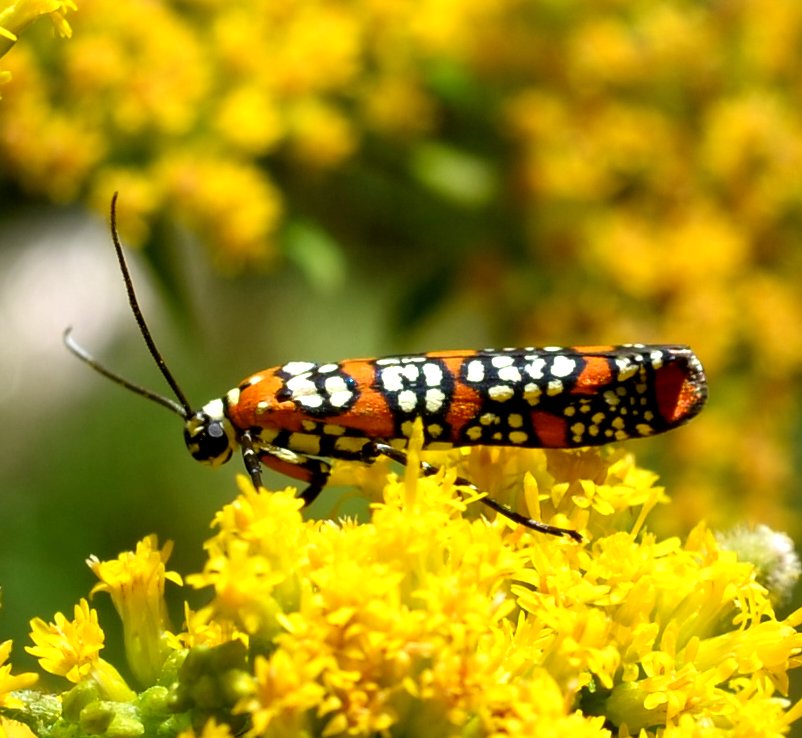
I was just talking to a friend on Thursday about whether we have Ailanthus here in Albion. But apparently we do, at least one species, the Golden Rain Tree, a Chinese import.
Apparently again, it is very invasive. But someone has already planted at least two on this street. My first thought, was, I can now raise the Ailanthus Saturniid moth, a rather large moth imported with the tree as a silk source. There are people who sell the cocoons. Here is a webpage devoted to the raising of these babies. If you look at the picture, you can see the "snake" pattern that evolved at the wingtip of members of the bigger family of Saturniid moths. But I digress.
I only saw one kind of grasshopper this week. One species of pillbug. One kind of slug. One empty snail shell.

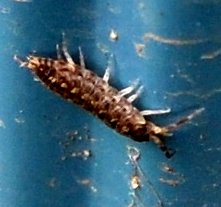
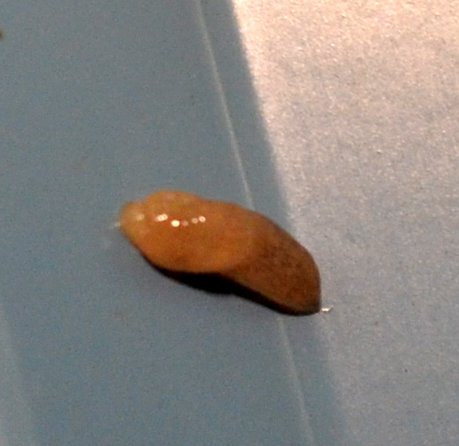
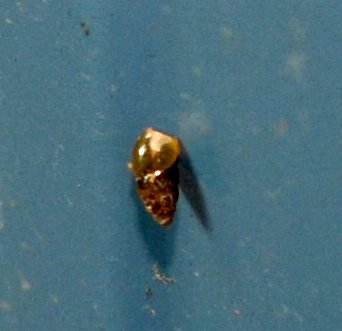
Among spiders, I saw one round brown spider. Since I associate roundness with cobweb spiders, that's what I'm guessing this one is. Grass spiders have been my most common sighting all summer, but this one was humongous. And since this one was so humongous, we shouldn't be shocked when we run into its droppings, all accreted together. It had eaten lots of little tiny bees, and a number of smaller ones, and at least one big green blowfly.
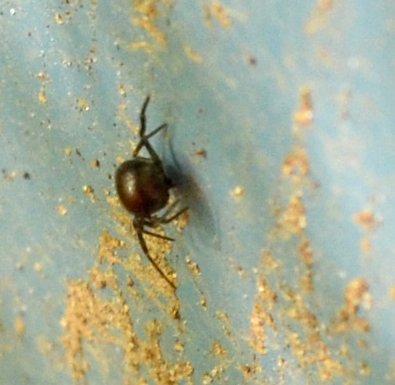
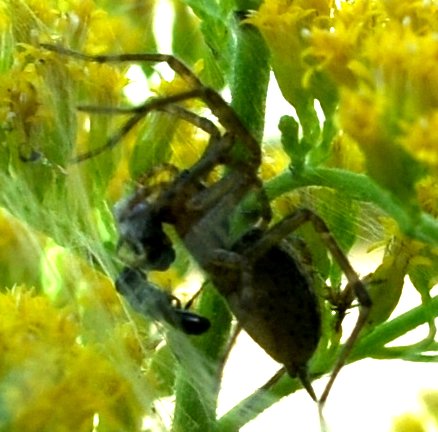

Of course the hero of the spider page is this good-sized jumping spider. Usually I see them when they are very tiny, but this one was at least a quarter inch across. Each time I changed angles it hugged its precious supper closer to the other side. The work of abstract art was a tiny tiny spider hanging from my bedroom ceiling. I took it outside on the end of its string. And last but not least, someone left the carcass of its supper on the wall of the shop.
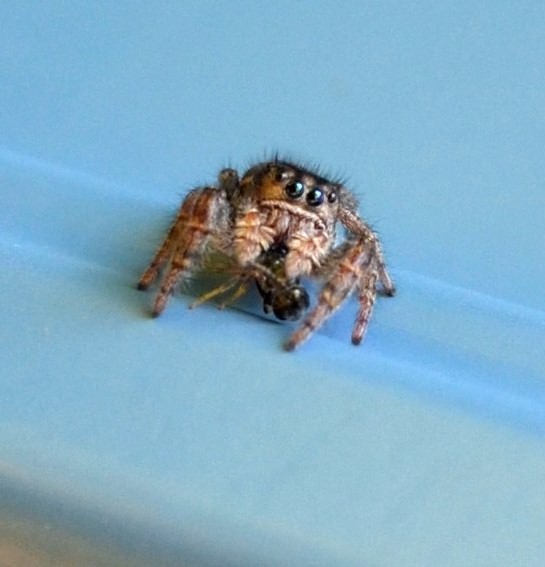
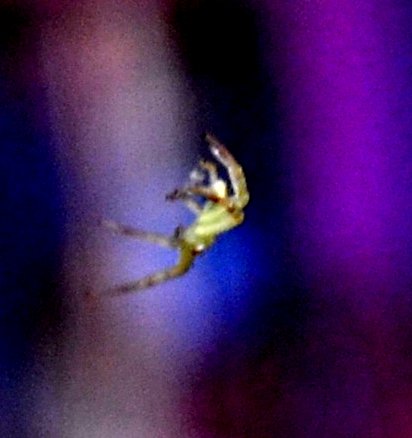
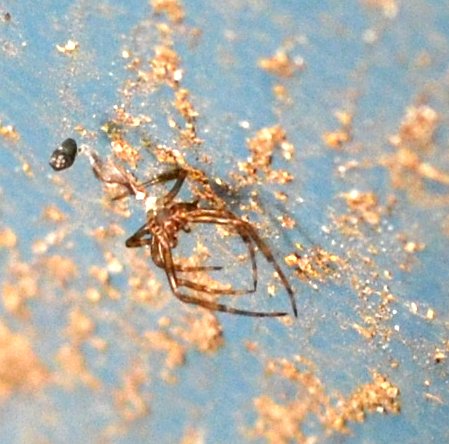
Here are some of the wasps. This first one is one of the Potter wasps, given the happy face on its back. Some of them have the eyes, some have the smile, but this one has both. It also has a bunch of bands going down its abdomen, so I'm calling it Ancistrocerus adiabatis, female. I'm also thinking the next one is genus Ectemnius. Its bands are broken around the abdomen. Third: I'm guessing on Euodynerus foraminatus for the third one.
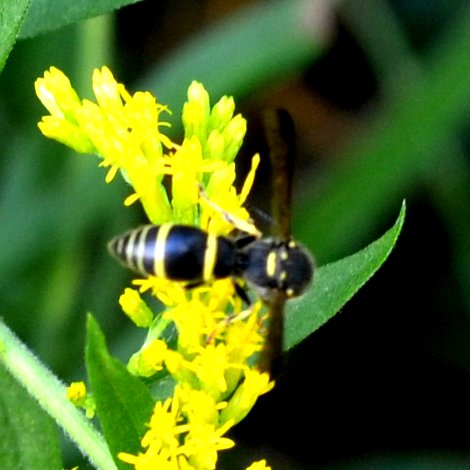

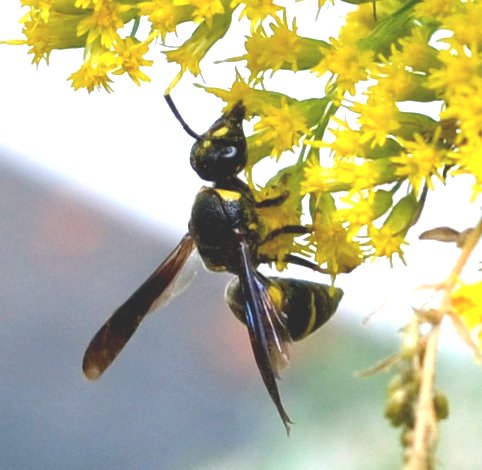
But there's one wasp that makes the whole summer worth waiting for the goldenrod to bloom and attract it. My very favorite is Polistes fuscatus, the Northern Paper Wasp. I seem to remember boring you to death last week with how to tell a boy from a girl one. I told you about the "7 abdominal segments - boy, 6 segments - girl." But did I tell you that each of them has a slightly different face, and actually differences in color distribution. For that reason, this species is the one that we're pretty sure can recognize each others' faces. Here's my favorite girl for the week.
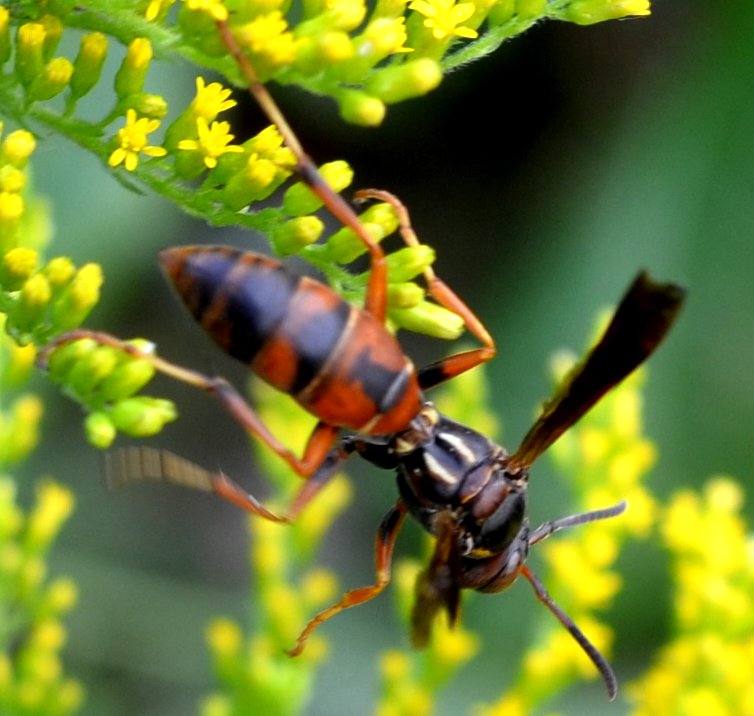
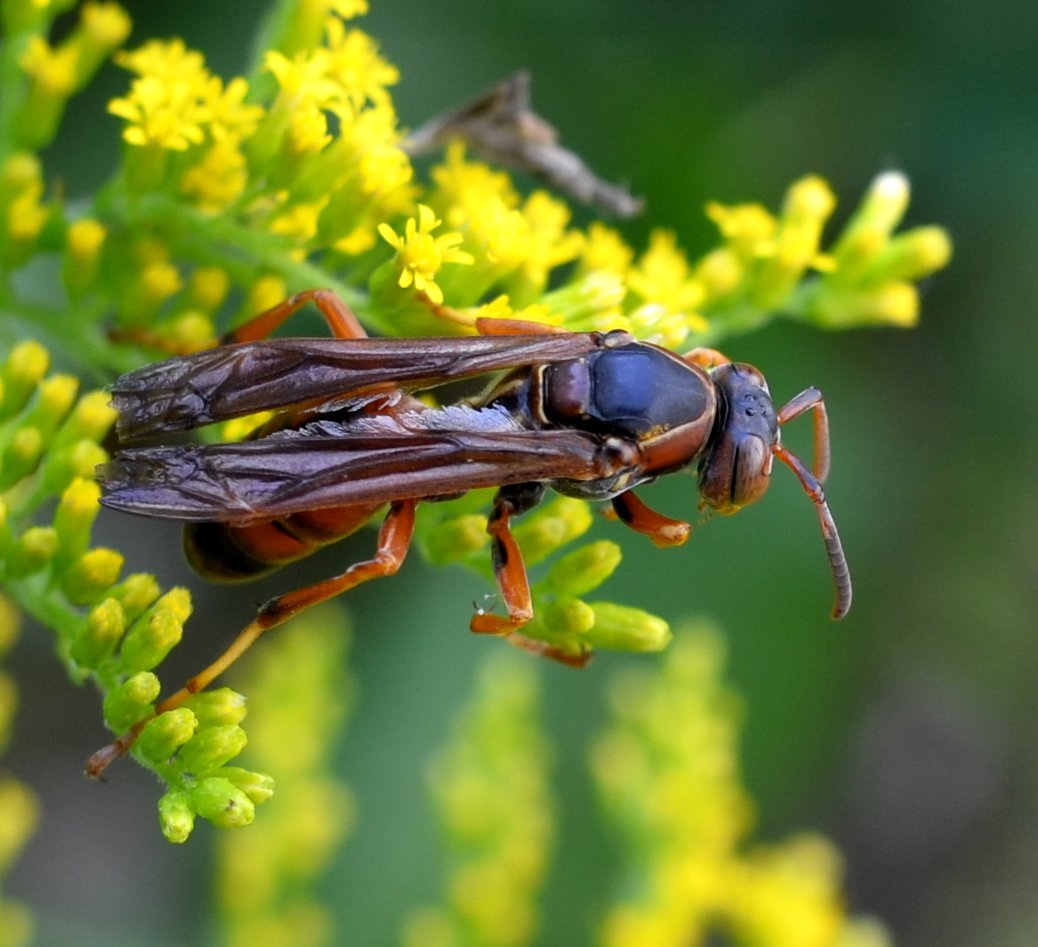
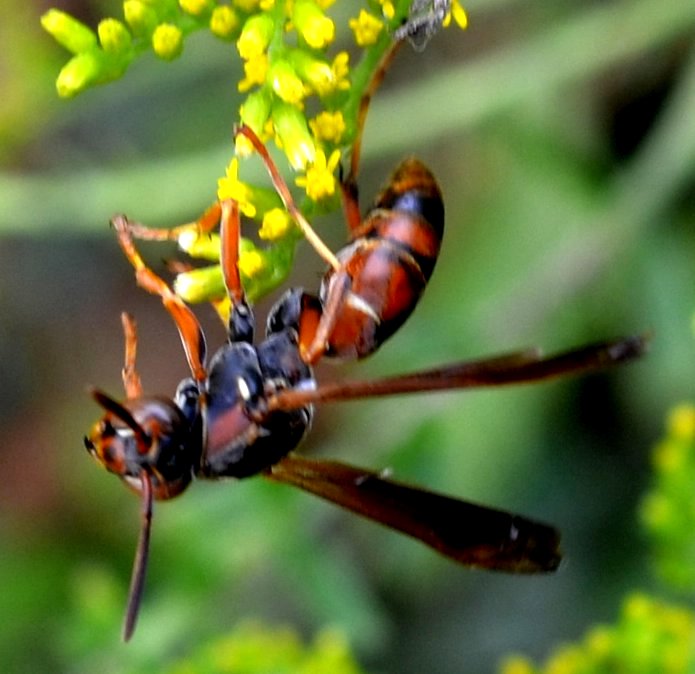
And here's my favorite boy, Polistes fuscatus, the Dark or Northern Paper Wasp). He has the masculine shield on his face. Then a side view. Then the most amazing thing happened. I'd been standing there with a camera aimed at his face for several minutes. Finally he just started bringing his appendages up to his mouth and preening. What a dandy!
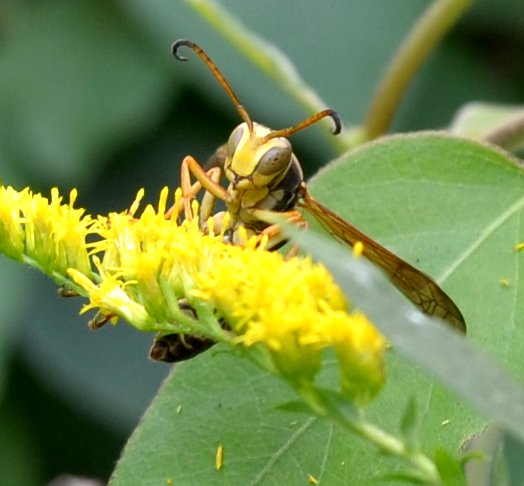


That was the short version of last week's pictures. I took so many of the same thing it just looked like more. But we do have some more shots of scenery etc. This first one is a strange Veronica variant in pink. Someone has eaten a lot of its leaves, but it has a full complement of buds ready. The False Solomon's Seal couldn't hold up its stash of berries so they are now on the ground where they will sprout later. The Hibiscus went crazy one day and had 9 blooms at once. That's the record!
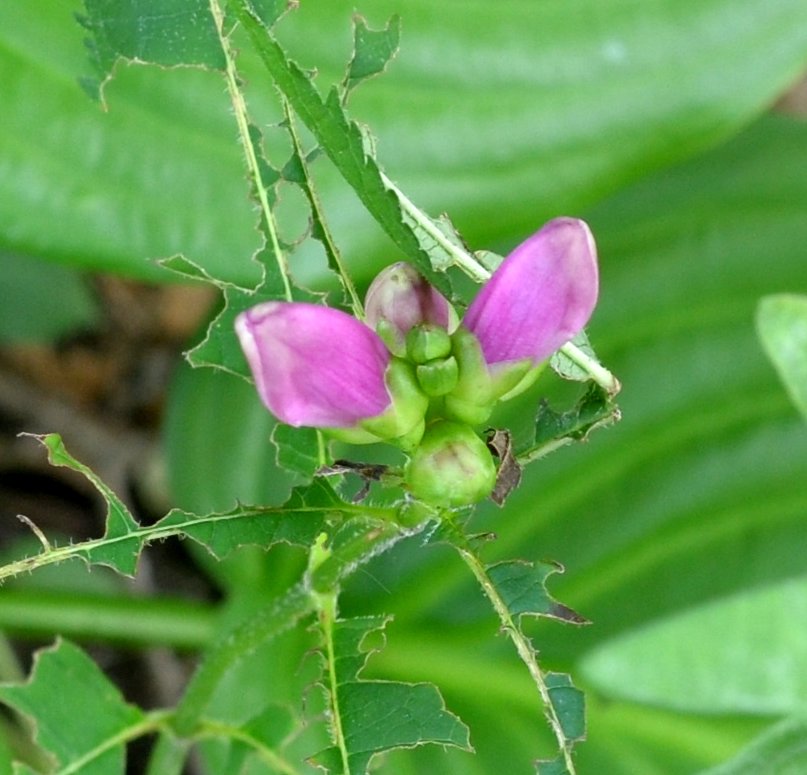

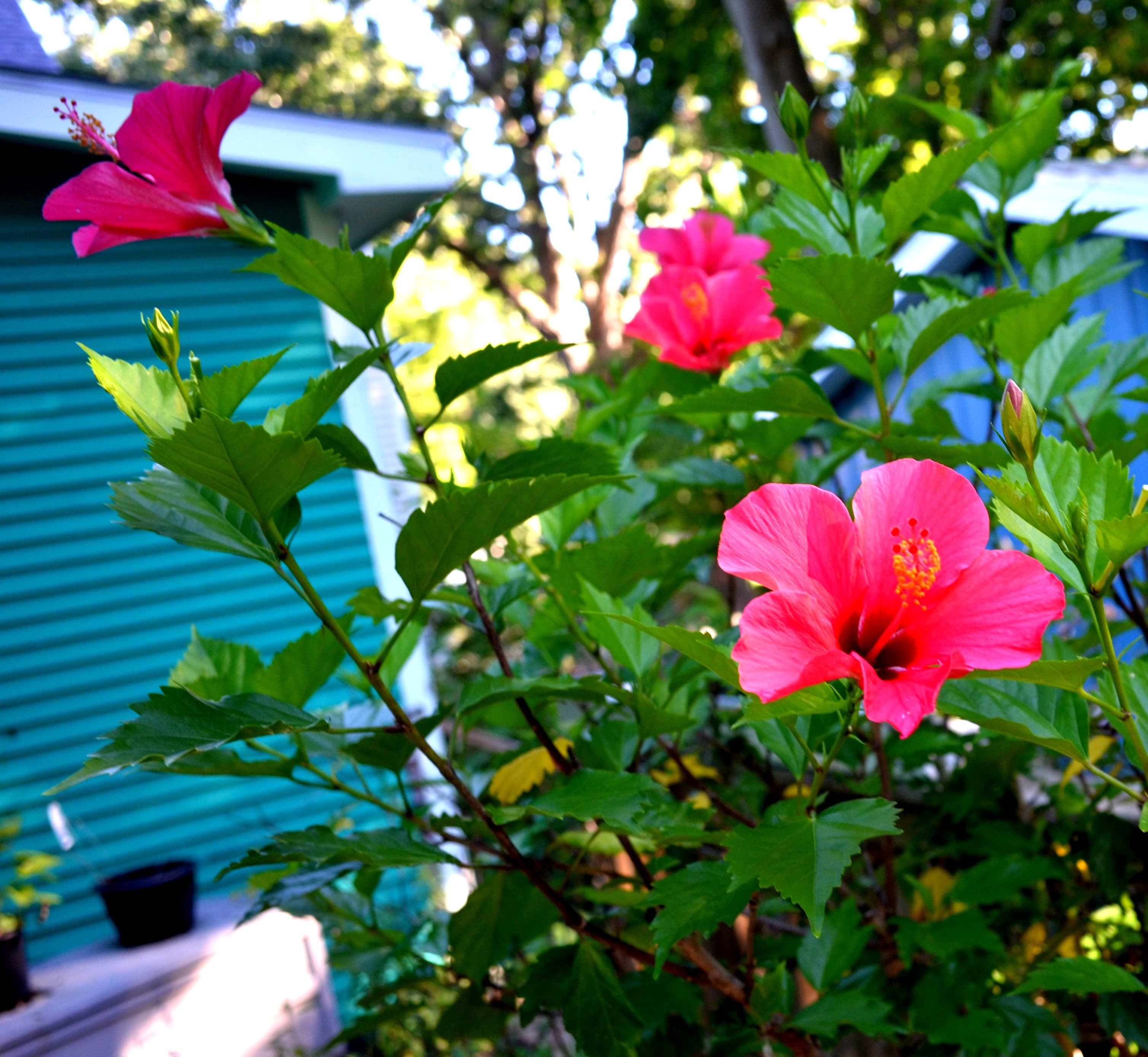
Amazingly, I am thinking this won't be late. I can proof it again tomorrow morning and then send it out!
Have a good week till we meet again. I already said that last time. I mean it.
Love, Martha
Back to September 11
On to September 25
Back to 2016 menu
Back to main menu
copyright Martha O'Kennon 2016





































































